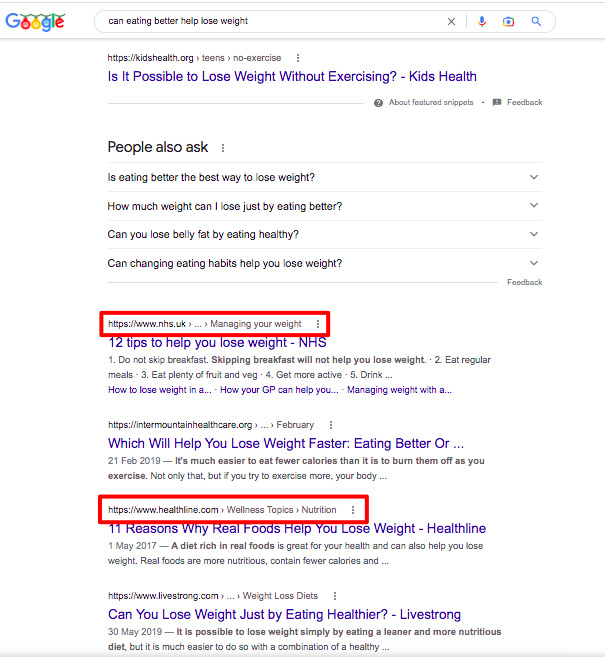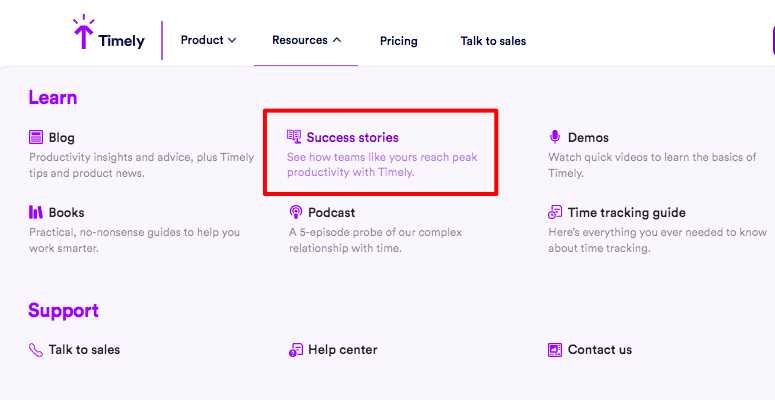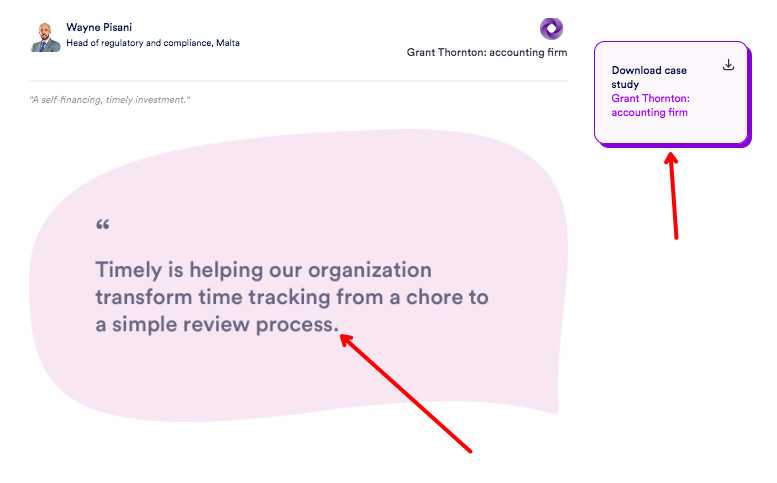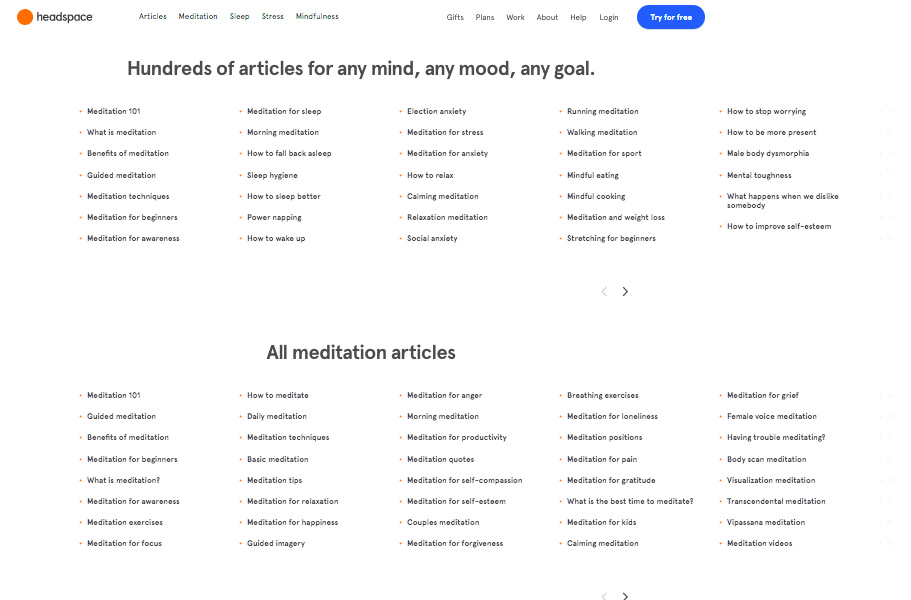It’s not easy to build up authority online, especially when there are thousands of websites and other brands all trying to do the same thing. It can feel a little demotivating. But don’t lose hope. All is not lost, and we can help. There are lots of ways you can build brand authority with content marketing. Your website is your brand’s tool. Use it to your advantage and you’ll see awesome results in time.
Let’s jump straight in to understand 8 ways you can build brand authority with content marketing.
Ways to build brand authority with content marketing
1. Answer the questions your customers are asking
Do keyword research to find out what questions your customers are asking, and then create educational content on your website for Google to index and therefore your users to read. It’s all about creating trust between you and your audience. Show them that you are the go-to expert in your industry.
Demonstrate that you have the best, most updated knowledge on everything when it comes to your field. People will start to see your brand name appearing when they Google questions.
When people search for a keyword, Google scans millions of internet pages. Then, it shows the user the most relevant, helpful content. So, you can see how competitive organic search is. Build your brand authority by answering frequently asked questions. People as well as Google will start seeing you as an authoritative figure. You’re more likely to show up in the SERPs and get clicks.
For example, the most authoritative or at least well-known UK brands for the keyword ‘can eating better help lose weight’ include the NHS and Healthline. Take a look at the example below. Those brands rank on page 1.

2. Use case studies and testimonials
Publish case studies and testimonials to build brand authority. Case studies and testimonials are real-life proof that people can trust your brand. Of course, it only works if you have positive reviews.
We recommend you create a new website section and add it to your navigation, like this.

Make it easy for people to find out about your brand’s success stories. Every happy customer gives you a new testimonial you can proudly shout about if it’s GDPR-friendly of course and you have permission.
Showcase your success wholeheartedly under your ‘Case Studies’ section. When people land on this page, they will see for themselves that other people trust your brand and they have had positive experiences. That gives them a huge authority signal in your favour.
Use the following to build out an effective case study:
- What happened? What did your company do?
- Photos
- Videos
- Customer quotes and names where possible
Put your happiest customers on your website. Have you ever received any positive mentions from anyone in the media or on social media? Add that too. This is your space to show the world what other people think of your brand.
Add your customer’s quote. Make it downloadable. Gate the PDF case study content. Here is an example.

You might get email data from potential customers and you could then nurture them, if you gate the content. If they’re interested in downloading your case study, they are almost ready to convert into a customer.
3. Write guest posts and outreach them to relevant websites
Write relevant and valuable blog posts and then outreach them to websites that host guest articles. This is a really common way to gain a backlink from an industry relevant website, which will improve your domain authority score. It also grows your brand awareness because people will start seeing and recognising your brand when they read your blogs on other websites.
Want to create guest posts and practice outreach? Don’t forget that your article must be written to a high standard and be authoritative. The reason is companies who publish guest blogs on their site naturally don’t want to publish low quality, unimpressive content.
So, do your research and write high value content with new statistics. Make the content great. Make it easy for a guest posting service to accept your request. Not got the time? Use a professional blog writing company.
How do you outreach your articles? You can use Help A Reporter Out, or HARO as it’s also known. They send emails when they need specific data from an industry expert, like you. So, carry out some research and always have some recent, accurate statistics and a quote from your company readily available. Then, check your email. The next time a journalist needs relevant data and comments from an expert in your industry, reply straight away with your resource. The journalist can then easily publish it as it is, and your brand authority grows.
4. Do your own research and publish newsworthy articles
Worried the journalist might not publish your story? We get it. Instead, set about your own research and publish newsworthy articles and content yourself on your own website. Share the article on social media to get some traction.
Have you got access to lots of relevant, unique data you’re allowed to use? Make the most of GDPR friendly data. Utilise the data you have, whether your business is lead generation or e-commerce focused.
For e-commerce businesses
Get a list of the highest sales you’ve made per location or per product category. Use that data to create an article with a click-bait style title. For example, “Top selling locations in the UK are…”. Make sure to optimise it for eCommerce SEO.
For lead generation businesses
Carry out surveys, questionnaires or real life interviews with your customers and find out real data. For example, “Over 90% of the 3,000 customers we surveyed voted ‘would recommend’…”
5. Produce valuable, unique, link-worthy assets
Create authoritative content to inform and educate your readers. But you can also do it and create something shareable. Take a recent article you published. Re-design it into a new infographic that explains your point even better, but in visual form.
They say a picture paints a thousand words, and it’s true. Our brains process and compute images faster than text. And in today’s world, would you rather read reams and reams of text or see an aesthetically pleasing image that gets the point across? Most people would prefer the image.
So, create an image, infographic, video or downloadable asset. Make it so useful that people will want to link to it, share via social media or email it to their colleagues, family or friends.
- Add your brand name and logo to the asset so that you get the credit
- Optimise the file name and image alt text so Google might rank it in image search
- Lazy load your image so that it doesn’t slow the page down
- Add up to 500 words of text to the page so it’s not classed as thin content
- Add a ‘Share’ link for social platforms
6. Reveal some of your top tips and secrets
We’re not saying you should reveal everything you know. But give some expert insight to attract your reader’s attention. Offer them a sneak preview of an industry secret that they will find useful, interesting or entertaining. Not many people want to share their secrets, so they often don’t.
But that’s a great opportunity for you. Provide your audience with exclusive content that no one else is supplying. It doesn’t have to be every single secret in the history of the trade so leave some mystery unwrapped.
7. Film expert interviews and publish videos
We see so many companies tirelessly trying to build brand authority with faceless, nameless articles. While authoritative content is ideal, you still need to make it human. Film a question and answer session with your business’ founder or anyone happy to go on camera.
Get them talking about the brand and get it published. It doesn’t have to be hours long.
8. Regularly publish educational, relevant content, don’t sell
Don’t sell. Do educate. Remember that when you’re building brand authority with content marketing. It shouldn’t be pushy or all about forcing a sale. People love to hear the story behind a brand because there is so often emotion connected to it, and we are all human after all. Nobody likes a pushy brand representative or an over-the-top salesperson. It’s the same with content.
Does your website’s content show your audience how your brand solves your customer’s problem? It should. Supply your audience with easy access to awesome content that makes their life easier. Headspace does this effectively over on their blog.

Add internal links to your articles like Headspace does for three reasons. Firstly, your user will be able to easily access the blogs and information they want in a few clicks. Secondly, Google may rank you higher for your blog’s target keyword if your anchor texts are keyword rich. Thirdly, you will build brand authority and trust with your reader by making their life easier and always being there with useful content.
So, there are lots of ways you can build your brand authority using content marketing. Maybe you just don’t have time. Does that sound all too familiar? We have a trusted team of writers from around the world. Come and chat with us if you need content writing services.
Do you want to understand more about SEO and content first? These will help.
